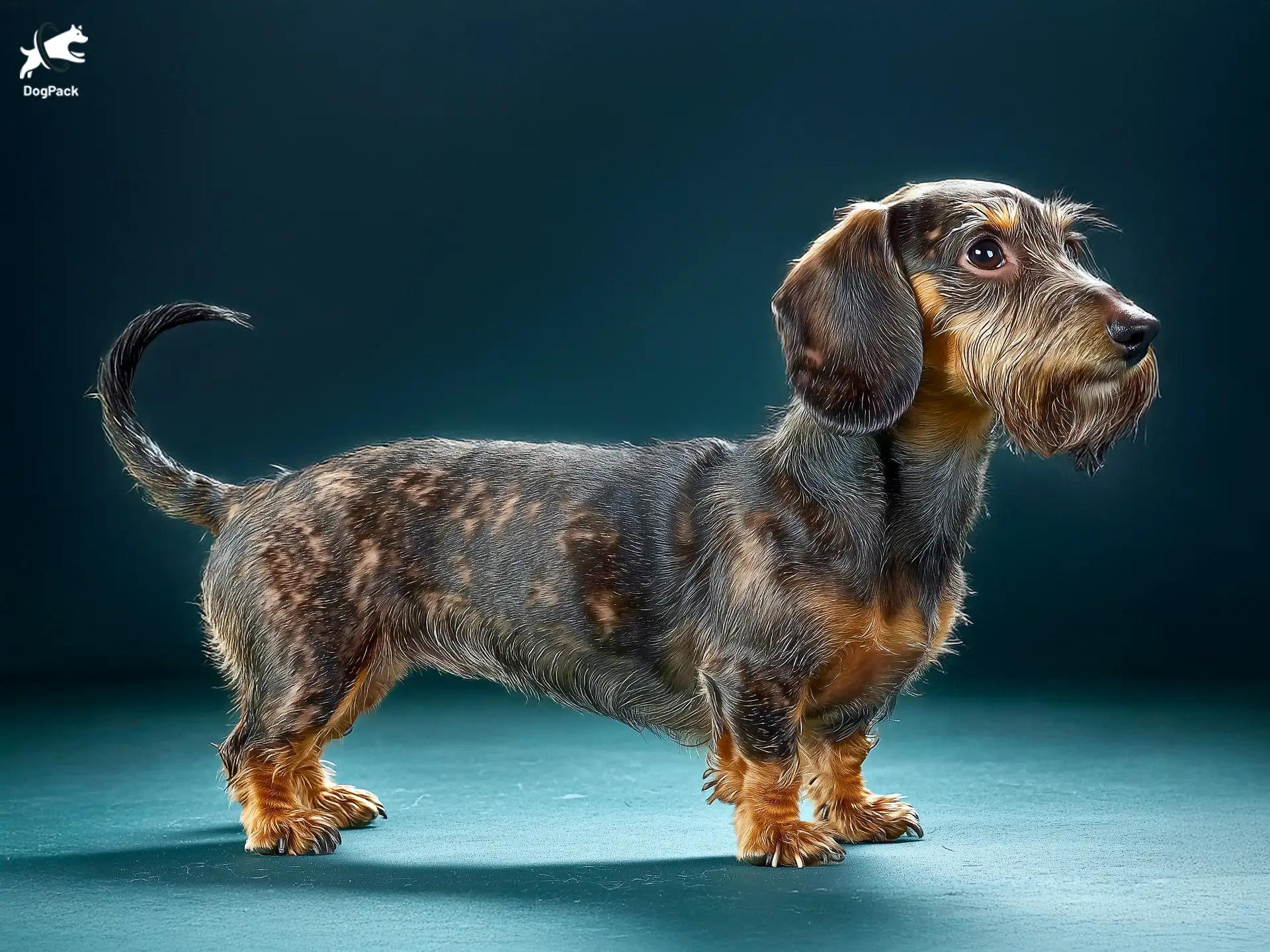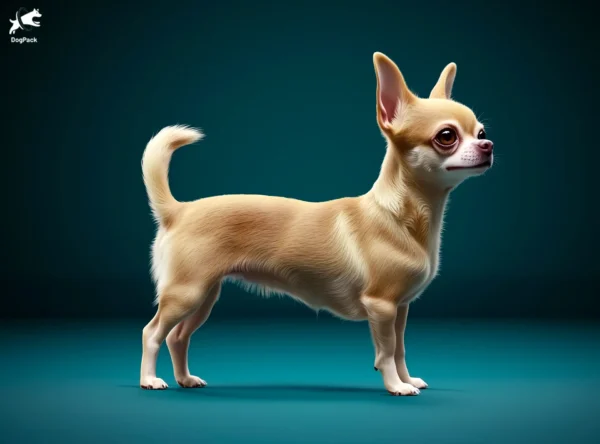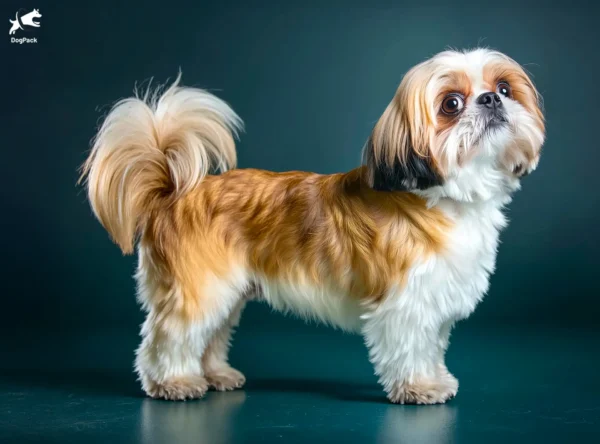Miniature Dachshund Dog Breed Info & Overview
Often called the “sausage dog” thanks to its long, low-slung body, the Miniature Dachshund is a big charmer in a tiny package. Known for spirited confidence and surprising stamina, this loyal companion hails from Germany and excels at brightening any home. Their small stature suits city life, but they love outdoor exploration too.
Characteristics
Pictures
Breed History
Traces of the Dachshund’s lineage appear as early as the 15th century in Germany, where these little canines were selectively bred to hunt burrowing animals like badgers. Their elongated bodies and keen sense of smell helped them root out prey in dens, making them an indispensable companion to hunters. Over time, their popularity spread across Europe.
Bred in various sizes and coat types, Dachshunds eventually branched into standard, miniature, and even toy varieties. Their shorter legs and compact frames allowed them to navigate tunnels effortlessly. Teckel, as they are often called in parts of Europe, became a symbol of tenacity, embodying the persistence needed to chase down elusive prey under challenging conditions.
By the late 1800s, breed enthusiasts refined smaller bloodlines specifically for tighter hunting spaces, giving rise to the Miniature Dachshund. Enthusiasts across purebred dog breeds recognized this petite version’s charm, and it soon found a place in royal courts and cozy living rooms alike. Today, it’s adored worldwide for its striking physique and steadfast loyalty.
Temperament, Personality
Dachshunds are famously stubborn yet undeniably charming. With a strong prey drive, they’re quick to chase squirrels and dig up garden plots, proving that size doesn’t limit their ambition. Early socialization helps manage their boldness, so they can coexist peacefully with other pets. They typically form deep attachments to their families, always on alert to protect their territory.
Affectionate and playful, these dogs thrive when included in family activities. They’re known to clown around, sometimes rolling on their backs to ask for belly rubs or barking insistently to grab attention. Patience is key if you want to harness their innate curiosity, which can occasionally turn mischievous when they’re bored or under-stimulated.
Above all, the Miniature Dachshund demands both affection and respect. While they can be wary of strangers at first, a gentle introduction usually wins them over. Their loyalty doesn’t waver, and they’ll stand by your side through thick and thin. This mix of devotion and attitude gives them a one-of-a-kind personality that keeps life interesting.
Physical Characteristics
The most striking feature of any Dachshund is its elongated torso set atop short, sturdy legs. This unique silhouette isn’t just for show—those robust little limbs were designed to power through narrow tunnels. Their heads are moderately narrow, with almond-shaped eyes that radiate curiosity. Ears are long and floppy, framing the face and amplifying their adorably alert expression.
Dachshunds can come in three coat varieties: smooth, wirehaired, and longhaired. Smooth-coated types have sleek, shiny fur that’s relatively low-maintenance, while wirehaired individuals boast a rougher texture. Longhaired Dachshunds present a more flowing coat that often requires extra brushing. Coat colors span a wide spectrum, including solids, dapples, and combinations of chocolate, black, tan, and more.
Even as a smaller version, the Miniature Dachshund retains that trademark elongated shape and balanced proportions. Typically weighing under 11 pounds, it’s lighter on its feet yet still robust enough for moderate physical challenges. Despite its petite build, this breed’s strong chest and muscular hindquarters hint at the hunting heritage that remains in its genes.
Health Issues
One of the most notable concerns for Dachshunds is intervertebral disc disease (IVDD), stemming from their elongated spine. Maintaining a healthy weight and minimizing high-impact activities, like jumping off furniture, can help reduce stress on their back. Regular vet checkups allow early detection of spinal problems, ensuring a better quality of life if issues arise.
Eye conditions, such as progressive retinal atrophy, can also appear in some bloodlines, impacting vision over time. Periodic eye exams, ideally starting at a young age, help spot any developing problems. Patellar luxation, a kneecap issue, is another potential risk. Staying on top of orthopedic evaluations can significantly enhance your dog’s comfort and overall mobility.
A well-balanced diet and controlled exercise regimen are key to preventing obesity, which exacerbates many health problems in the Miniature Dachshund. Routine dental cleanings ward off gum disease, and annual blood tests can catch metabolic disorders early. By prioritizing routine care and staying vigilant about any unusual symptoms, you can help ensure a long, healthy life.
Grooming Needs
Grooming a Dachshund hinges on coat type. Smooth-coated individuals need only a quick brush once a week to keep shedding under control, while wirehaired versions benefit from occasional stripping to remove dead hair. Longhaired varieties often need more frequent brushing to prevent tangles, especially around the ears and tail where hair can mat easily.
Bathing schedules differ, but most Dachshunds do fine with a bath every four to six weeks. Over-bathing can strip natural oils, so it’s best to use a dog-specific shampoo. Trimming nails regularly helps avoid discomfort and potential injuries, and be sure to clean their ears gently to remove excess wax or debris that might lead to infections.
For the Miniature Dachshund, consistency is the secret to a neat appearance. A weekly once-over, including tooth brushing with a canine-safe toothpaste, goes a long way in preventing dental troubles. Consider occasional professional grooming if you’re unsure about trimming, especially for wirehaired coats. Regular care keeps them comfortable and looking their best, ready for any adventure.
Exercise Requirements
Despite their short legs, Dachshunds are surprisingly active, requiring daily walks or interactive play sessions. A fenced yard provides a safe spot to sniff and roam, satisfying their natural curiosity. Engaging them with puzzle toys or treat-dispensing gadgets stimulates both mind and body. Overexertion, though, especially jumping from high places, can strain their vulnerable spine.
Striking a balance between moderate exercise and cautious movement is vital. Short walks multiple times a day often serve them better than one long trek, given their limited stamina and elongated frame. Incorporate low-impact games like gentle fetch on level ground. Always monitor them for signs of fatigue, and avoid letting them climb too many stairs.
For the Miniature Dachshund, short bursts of exercise paired with mental stimulation offer the best routine. A brisk 20-minute walk each morning and evening can keep them fit without overtaxing their spine. Some enjoy supervised swimming, which alleviates stress on the back. Finding the right blend of activities ensures they remain spry, content, and well-behaved.
Training Tips
Dachshunds are known for a mind of their own, so patience is essential. They respond best to positive reinforcement, such as treats, praise, and gentle encouragement. Avoid harsh scolding or punishment, as it can make them more stubborn or fearful. Consistent routines and a calm training environment set the stage for successful lessons.
Short, focused sessions work better than marathon training. Break tasks into small steps, rewarding each achievement to keep motivation high. Because of their strong prey drive, recall training in a secure area is wise. Introducing basic commands early helps prevent them from developing unwanted behaviors, such as excessive barking or possessive tendencies around food and toys.
For the Miniature Dachshund, housebreaking can be a particular challenge due to a smaller bladder and a touch of stubbornness. Establish a consistent bathroom schedule and consider crate training as a supportive tool. Keep sessions upbeat and end on a win, reinforcing positive patterns that encourage them to embrace learning rather than resist it.
Nutrition, Diet
Miniature Dachshunds have a propensity to gain weight, so controlling meal portions is essential. Typically, an adult weighing around 10 pounds may require about 300 to 350 calories per day, depending on activity level. Split this into two small meals to keep energy levels steady. Overfeeding not only leads to obesity but also heightens the risk of back problems.
High-quality, protein-rich kibble formulated for small breeds is a good foundation. Look for moderate fat levels to support coat health without piling on extra pounds. Some owners supplement with lean meats like turkey or chicken, but avoid cooked bones and high-sodium scraps. Keep treats bite-sized and occasional, using them as rewards during training rather than random indulgences.
Monitor your dog’s body condition by feeling the ribs and checking for a visible waistline when viewed from above. Rapid weight gain might necessitate a vet consultation for adjusting meal frequency or type of food. Some individuals do well on specialized diets containing joint-support supplements, given the breed’s susceptibility to back issues, especially with additional weight.
Adoption, Breeders
Finding a Miniature Dachshund starts with researching reputable breeders or contacting breed-specific rescues. Legitimate breeders prioritize health testing and transparent records, ensuring you receive a well-cared-for puppy. Dachshund Club of America lists recognized breeders, while Adopt a Pet can connect you with rescue organizations offering older dogs in need of loving homes. Always request to visit the breeder’s facilities or verify references.
Ask detailed questions about the puppy’s lineage, including potential inherited conditions like IVDD. Reputable breeders typically provide health clearances for parents and guidance on early socialization routines. If adopting, inquire about the dog’s background, training progress, and any medical records. A thorough understanding of each puppy’s or adult dog’s history sets you up for long-term success.
Beware of puppy mills offering dogs at suspiciously low prices or refusing to share health information. Quality breeders invest significantly in proper care and genetic testing. By choosing a well-bred or carefully assessed rescue Dachshund, you ensure a strong start. Whether you go the puppy or adult route, the right match fosters a loving, lifelong bond.
Family Pet?
Dachshunds love being part of a family, particularly if they’re included in daily fun. They thrive on attention and can become anxious or bored if left alone for long periods. Supervised play with children is encouraged, but kids should learn gentle handling because these dogs can be sensitive around their backs and can nip if startled.
They’re fiercely devoted and will often follow their favorite person from room to room, essentially becoming a tiny shadow. This unwavering loyalty, however, might lead to jealousy if they sense another pet encroaching on their space. Making time for shared activities and group training sessions can ease potential tensions and help all family members bond.
Overall, the Miniature Dachshund can make a warm, playful companion in a household with respectful children and pet-savvy adults. Early socialization and clear boundaries help them integrate smoothly into multi-pet families. With proper supervision and patience, these spirited little dogs quickly carve out a niche as a beloved member of any loving home.
Right For You?
If you want a small dog with a giant personality, the Dachshund might be your match. However, their stubborn streak and potential health concerns mean they require a dedicated owner ready to invest time in training and preventive care. They’re not the best fit for those who prefer a completely laid-back companion.
Apartments can be suitable if you address their need for daily walks and mental engagement. Barking may be an issue, so consider your tolerance for noise and whether your neighbors might mind. Regular checkups become more important as they age, especially for spinal health. Keeping them lean and active can substantially prolong their mobility.
Those ready for the unique blend of sass and sweetness will find the Miniature Dachshund endlessly entertaining. Their signature shape and lively temperament spark joy, but you’ll need to be vigilant about back safety. Ultimately, this breed appeals to owners who appreciate a dog that’s as loving as it is independent, with plenty of personality to spare.
Conclusion
Choosing a Miniature Dachshund means welcoming a spirited, loyal friend with an iconic physique. Their size suits compact living, yet they relish daily adventures and ample human attention. Although prone to stubbornness and back issues, consistent training and mindful care can keep them fit and content. In return, they deliver unwavering devotion, comedic antics, and a dash of feistiness that brightens any household. If you’re prepared to embrace their unique quirks, this petite dog rewards you with endless affection. With a balanced routine of exercise, social engagement, and preventative health measures, you’ll have a companion that turns every day into a joyful experience.
FAQs
-
What is the difference between a Miniature Dachshund and a Standard Dachshund?
The Miniature Dachshund is significantly smaller than the Standard Dachshund, weighing under 11 pounds (5 kg) compared to the 16-32 pounds (7-15 kg) of a Standard Dachshund. Despite their size, they share the same hunting instincts and bold personality.
-
Why is the Miniature Dachshund also called a “Teckel” in some countries?
The term “Teckel” is commonly used in Germany, where Dachshunds were originally bred as hunting dogs. In hunting circles, “Teckel” specifically refers to working-line Dachshunds trained for tracking and retrieving game, especially in dense forests.
-
Do Miniature Dachshunds have different coat types?
Yes, the Miniature Dachshund comes in three coat varieties: smooth, long-haired, and wire-haired. Each has distinct grooming needs—smooth coats are low-maintenance, long-haired require regular brushing, and wire-haired may need occasional hand-stripping.
-
Are Miniature Dachshunds prone to back problems?
Yes, due to their elongated spine and short legs, Miniature Dachshunds are highly prone to intervertebral disc disease (IVDD). Preventative care includes limiting stair use, avoiding high jumps, and maintaining a healthy weightto reduce spinal stress.
-
Are Miniature Dachshunds suitable for apartment living?
Yes, Miniature Dachshunds adapt well to apartment life, thanks to their small size. However, they can be barkers and need daily walks and playtime to prevent boredom. Proper training and socialization help them become calm indoor companions.
Breed Ratings
Bright but stubborn, they can learn commands with consistent methods. They excel in problem-solving but may ignore repetitive drills.
Lively and entertaining, these dogs love interactive games. They relish fetch and tug-of-war, often clowning around to gain attention.
Moderate bursts of activity define them. They’ll happily chase a toy or join short walks but also appreciate long naps in a cozy spot.
Shedding varies by coat type, from minimal in smooth coats to moderate in longhaired. Regular brushing helps control stray fur effectively.
Originally bred to hunt, they have a strong instinct to chase small animals. Early training and supervision can help manage this trait.
Smooth-coated individuals need minimal upkeep, whereas wirehaired and longhaired require more attention. Overall, grooming remains fairly straightforward.
Stubborn streaks can challenge owners. Positive reinforcement is essential. When motivated correctly, they can learn a variety of commands.
They bond closely with their families and dislike solitude. Extended alone time may lead to anxiety or destructive behavior if not addressed.
Vocal tendencies are common, especially when alerting owners or seeking attention. Proper socialization and positive training can reduce excessive noise.
Typically light droolers, they rarely leave slobbery messes. Minor drooling might occur after meals or while anticipating treats.
Generally sociable with other dogs if introduced early. They can be territorial, so controlled meetings and continued positive interactions help.
They face back and joint concerns, but attentive care and vet checkups support a robust life. Maintaining a healthy weight is especially vital.













